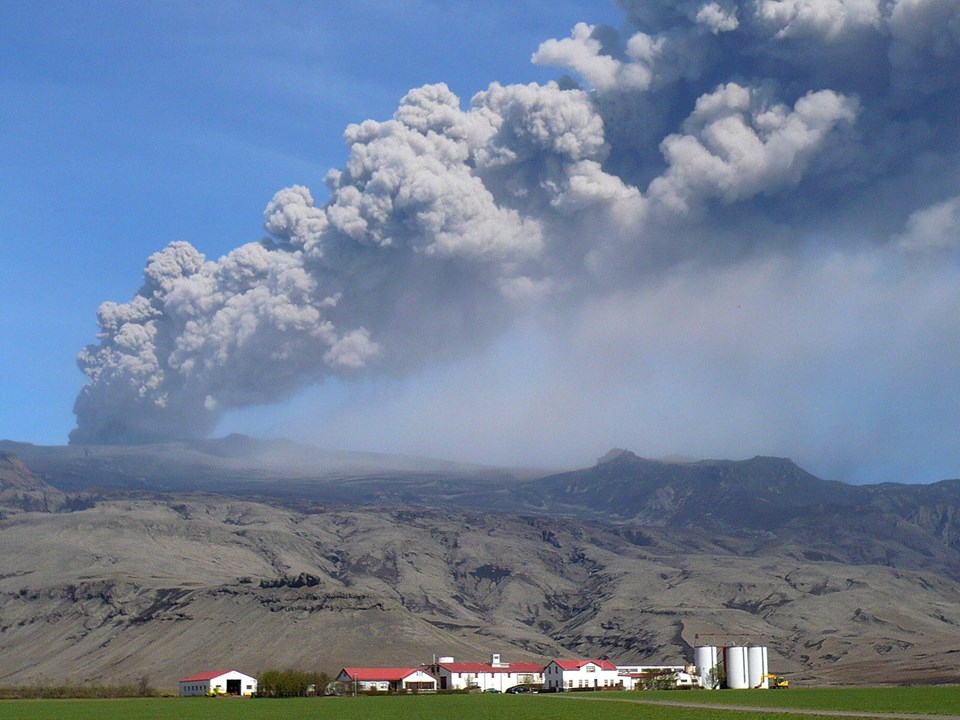Reducing the economic damage from volcanic ash clouds
The eruption of Icelandic volcano Eyjafjallajökull in 2010 wreaked havoc on Europe’s airways. The rapid spread of a huge cloud of ash led to over 100,000 flight cancellations, at a cost estimated at £3 billion. Researchers at the University of Bristol have helped to reduce the likelihood of this happening again.

The eruption of Icelandic volcano Eyjafjallajökull in 2010 wreaked havoc on Europe’s airways. The rapid spread of a huge cloud of ash led to over 100,000 flight cancellations, at a cost estimated at £3 billion.
Managing busy airspace during volcanic eruptions relies on having an accurate forecast of the quantity of ash likely to be discharged. At the time of the Eyjafjallajökull eruption, estimations were based on the height of the ash plume – a measure that was only reliable in still air. In the immediate aftermath, researchers at the University of Bristol were able to show that the ash plume discharged by
Eyjafjallajökull had been affected by strong winds, and that the volcano had released 100 times more ash into the atmosphere than originally estimated.
This improved understanding of volcanic ash clouds meant that when Iceland’s much larger Grímsvötn volcano erupted in 2011, far fewer flights were cancelled or disrupted, with an estimated economic cost of around 1% of that associated with Eyjafjallajökull.
The Bristol research has influenced research strategies at aero-engine manufacturer Rolls-Royce and led to better management of airspace by airlines and major decision makers such as the Civil Aviation Authority. More accurate forecasting of ash clouds, and associated risk modelling, means safer skies and more reliable flights.
Bristol's Volcanology Research Group won a Queen's Anniversary Prize in 2015 for its world-leading research in volcanology and its applications to risks around the world.
-
Hamir Patel
hamir.patel@russellgroup.ac.uk
020 3816 1316
-
Stephanie Smith
020 3816 1310
 X
X

